-
Car Reviews
- All reviews
- Midsize SUVs
- Small cars
- Utes
- Small SUVs
- Large SUVs
- Large cars
- Sports SUVs
- Sports cars
- Vans
Latest reviews
- Car News
-
Car Comparisons
Latest comparisons
- Chasing Deals
The new Triton is well and truly here, but does it live up to promises of being a more premium and capable ute?
Utes are here, there and everywhere in Australia. The segment is one of our local market’s most popular.
From mainstays like the Toyota Hilux and Ford Ranger through to the Mazda BT-50, Isuzu D-Max and Nissan Navara, as well as more budget-friendly alternatives like the GWM Ute Cannon and the LDV T60, for instance.
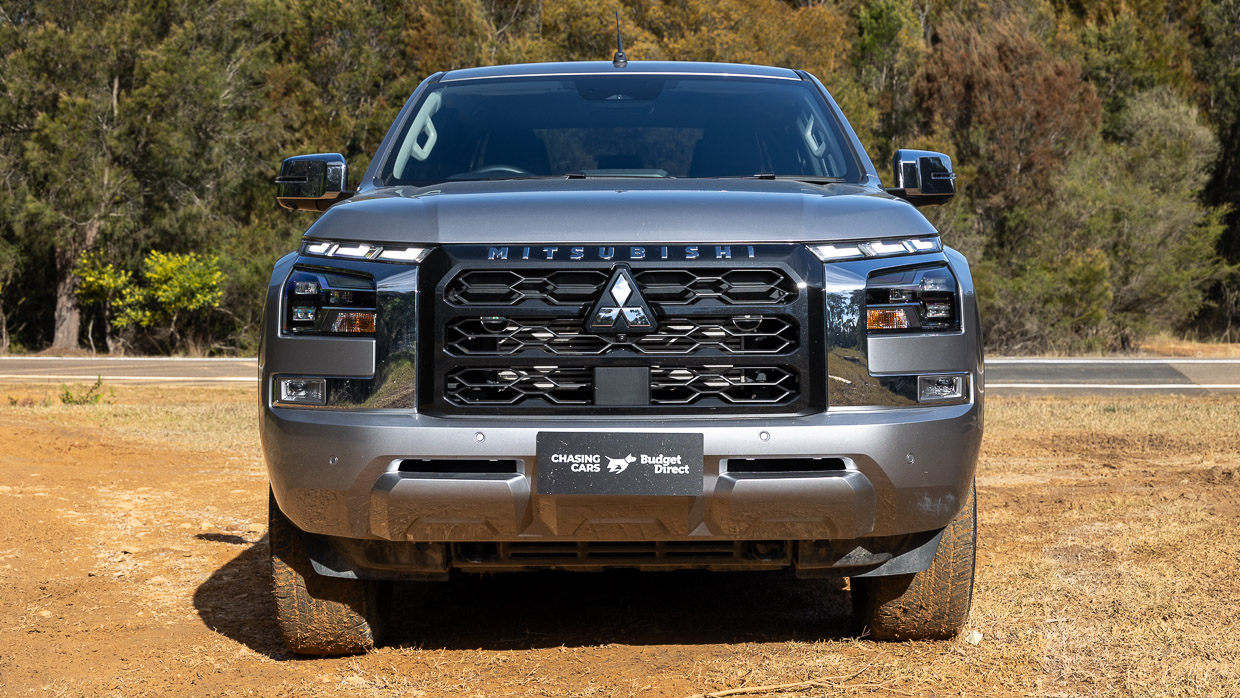
Even Korean car giant Kia will soon bring its own ute flavour to local shores with the Tasman, and BYD will bring the fierce-sounding Shark ute, too.
But how many more utes can the Australian market handle?
Not only is there so much to choose from, but Australian buyers are also sometimes asked to fork out more for a ute. A $70K plus ute is not unusual these days. But is there a middle ground of sorts?
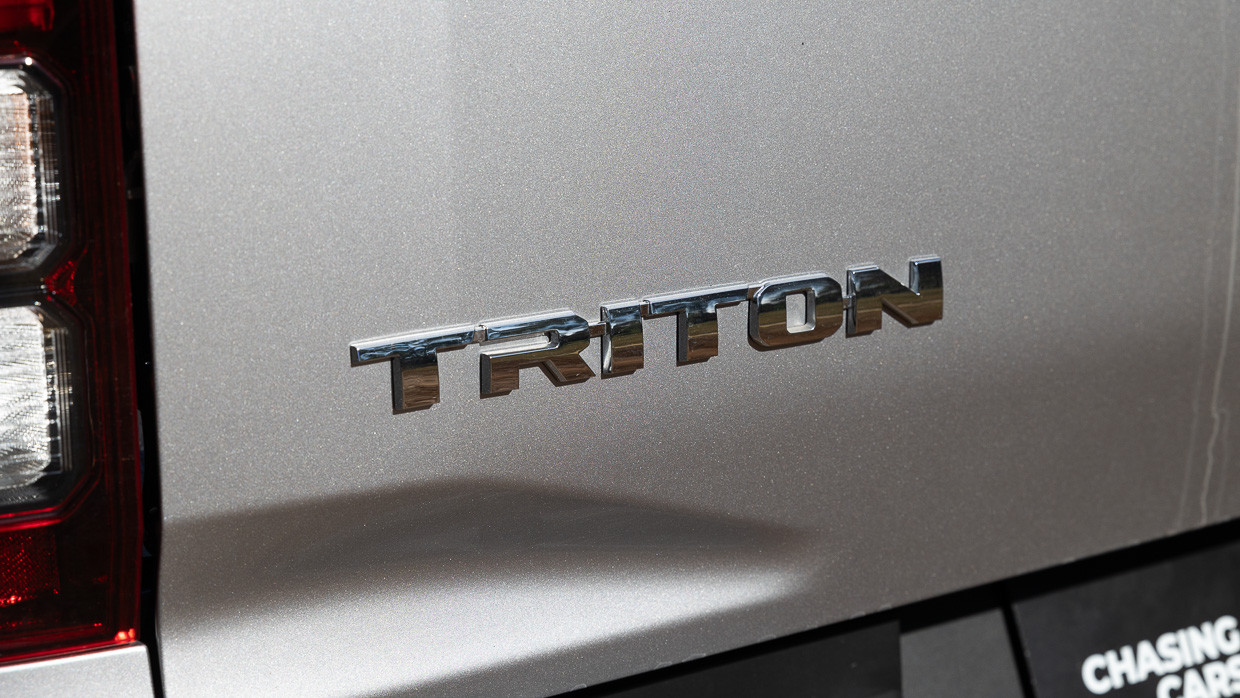
Well, enter the new-generation MV Mitsubishi Triton.
From the ground up, this really is an all-new ute, it’s 15mm longer and 50mm wider than before. It’s got a new engine, a new interior and, of course, a very different look to before.
But is this new Triton enough of an upgrade? And is it premium enough for those looking for an everyday vehicle, not just a workhorse? Mitsubishi Australia stated at the model’s launch that the new ute delivers “a premium ownership proposition; from vehicle specification, quality and value, to the dealership experience and after sales support”.
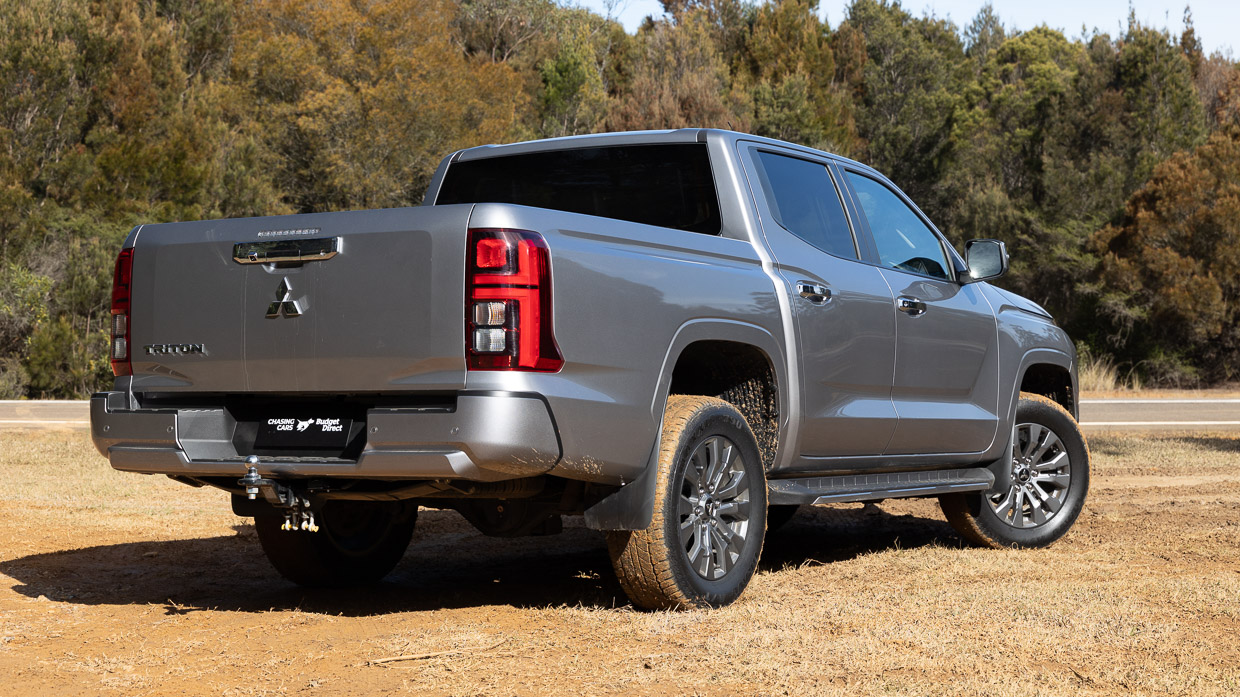
Well, I guess it’s time to find out about that with some real world testing!
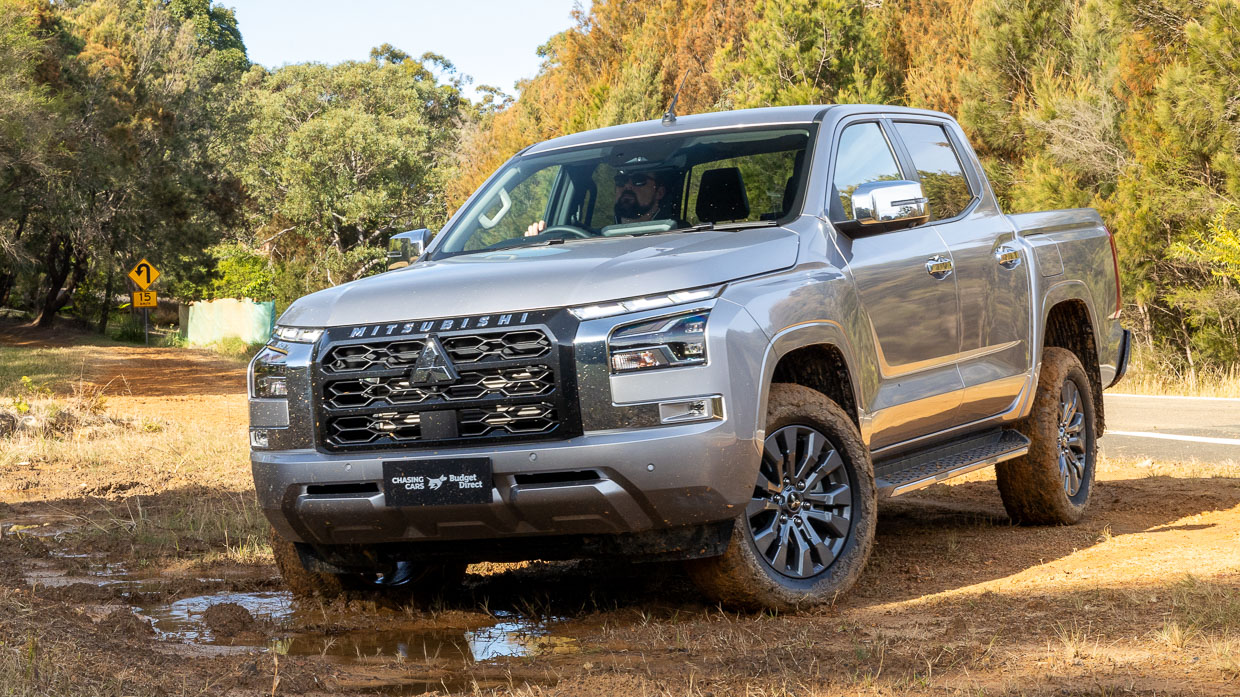
Our Triton test vehicle is the GLS, which sits just below the flagship GSR in the Triton lineup. The GLS is priced at $59,090 before on-road costs and features as standard the following equipment:
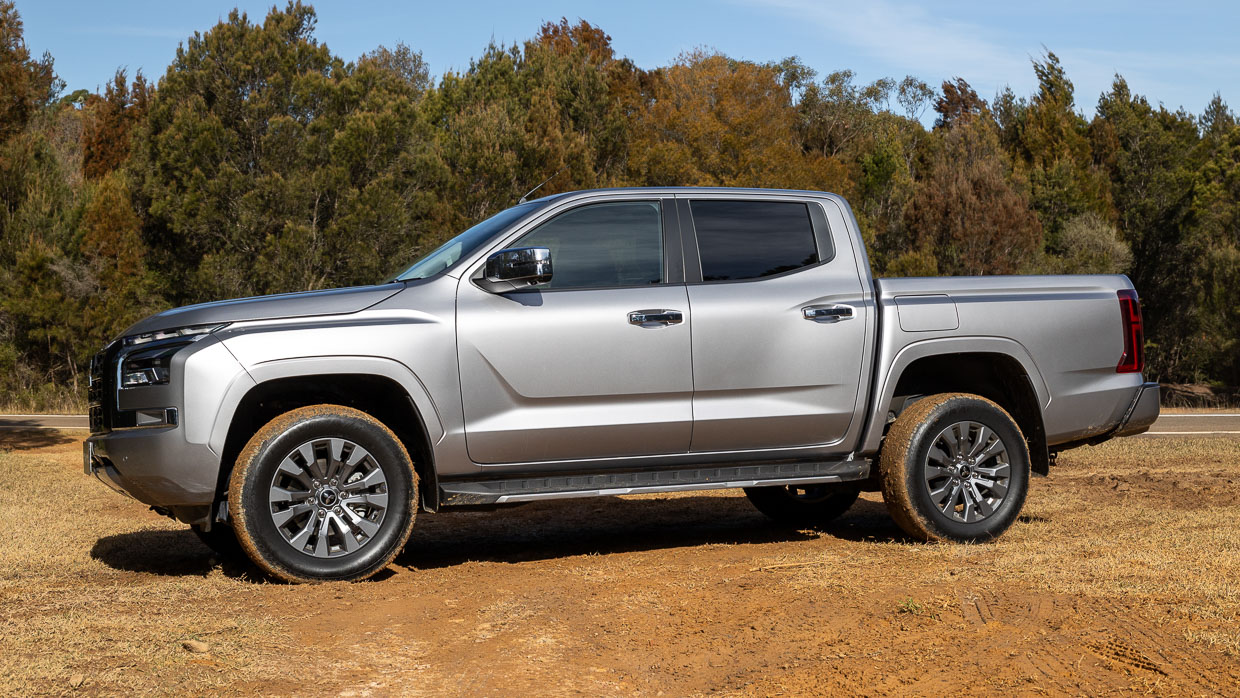
Our vehicle on test was also fitted with a few options, including the popular Deluxe leather pack ($1500), rubber floor mats ($151), tow bar kit ($1450), tow ball ($41), electric brake kit ($850) and premium silver paint ($740).
This brings the total MSRP price of our test Triton GLS to $64,022 before on-road costs.
In terms of value, the Triton certainly does not skimp on standard equipment, but it does miss out on some features on the GSR such as black 18-inch alloy wheels, rear sailplane, and heated front seats, along with much more black styling on the exterior which I am personally a fan of over the GLS’s chrome trim pieces.
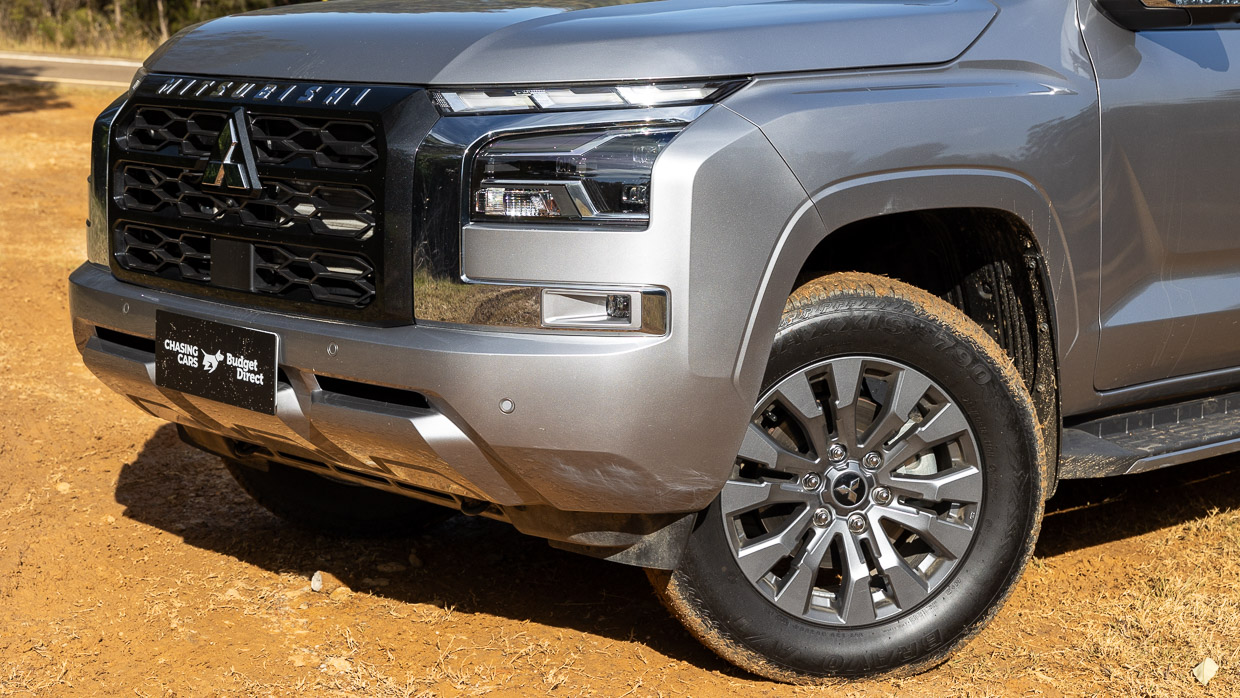
With that being said, when compared to lower specs of Tritons, like the GLX+, the GLS adds Mitsubishi’s SuperSelect full-time four-wheel drive system, larger 18-inch alloy wheels and standard-grade leaf springs over the lower grade’s use of heavy-duty units. The higher spec of the GLS is likely to be more popular among family buyers.
Here at Chasing Cars, I’ve been typecast a bit with utes. I’ve driven a stack of new utes over the past seven weeks, so I have been given the unofficial journalistic title of ‘Chasing Cars ute man’. It seems then that there is no better time than now to have my very first drive in the new Mitsubishi Triton.
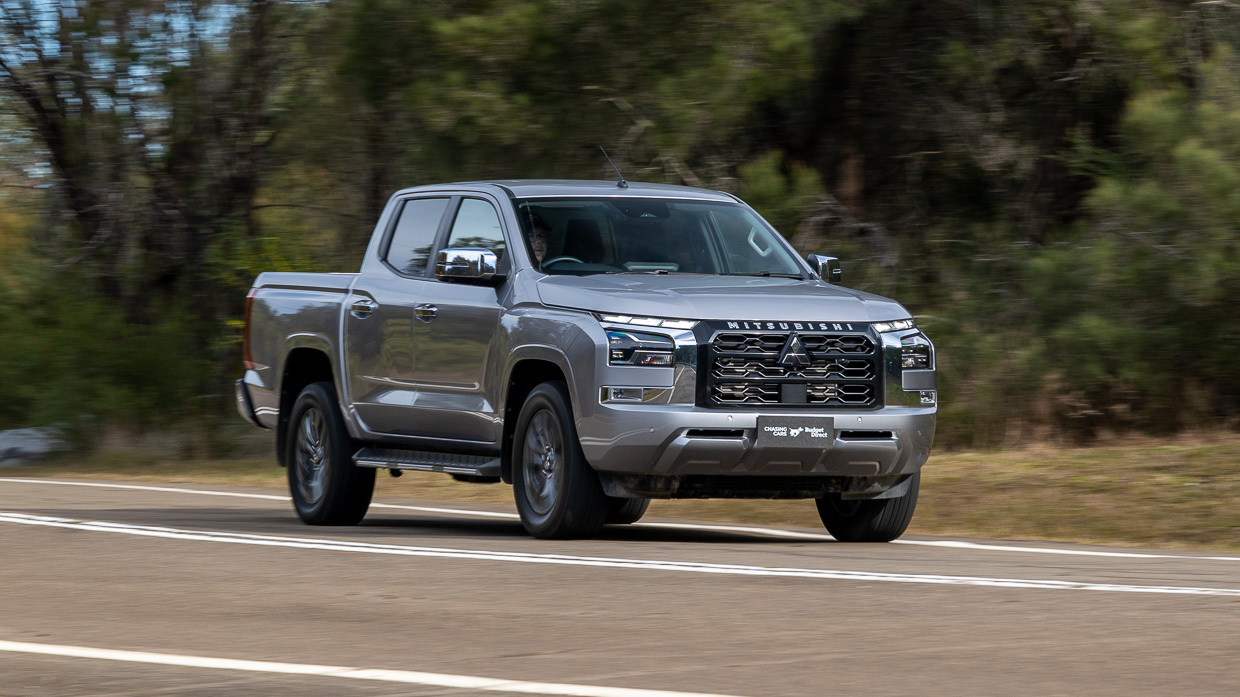
First impressions on startup and driving around town, the new Triton is like many of its competitors – it’s got a bit of a firm and jiggly ride through inner city Sydney streets. Utes with leaf springs struggle to hide this feeling, but I was half expecting the new Triton to be a step above and an improvement in ride quality over the old MR Triton.
I completely understand that the new Triton is still priced as a middle-tier ute but it can’t get anywhere close to the refinement and poise of the current Volkswagen Amarok or Ford Ranger, for instance. Those segment leaders are quite a bit more expensive spec-for-spec of course but the point stands.
I get that these are still commercial vehicles first and foremost, but as utes evolve into everyday vehicles, models like the Amarok have proven that utes can ride well and be comfortable. Not everyone gets it right the first time and the Triton clearly still has some room for development and hopefully we see further refinement over the life of this vehicle.
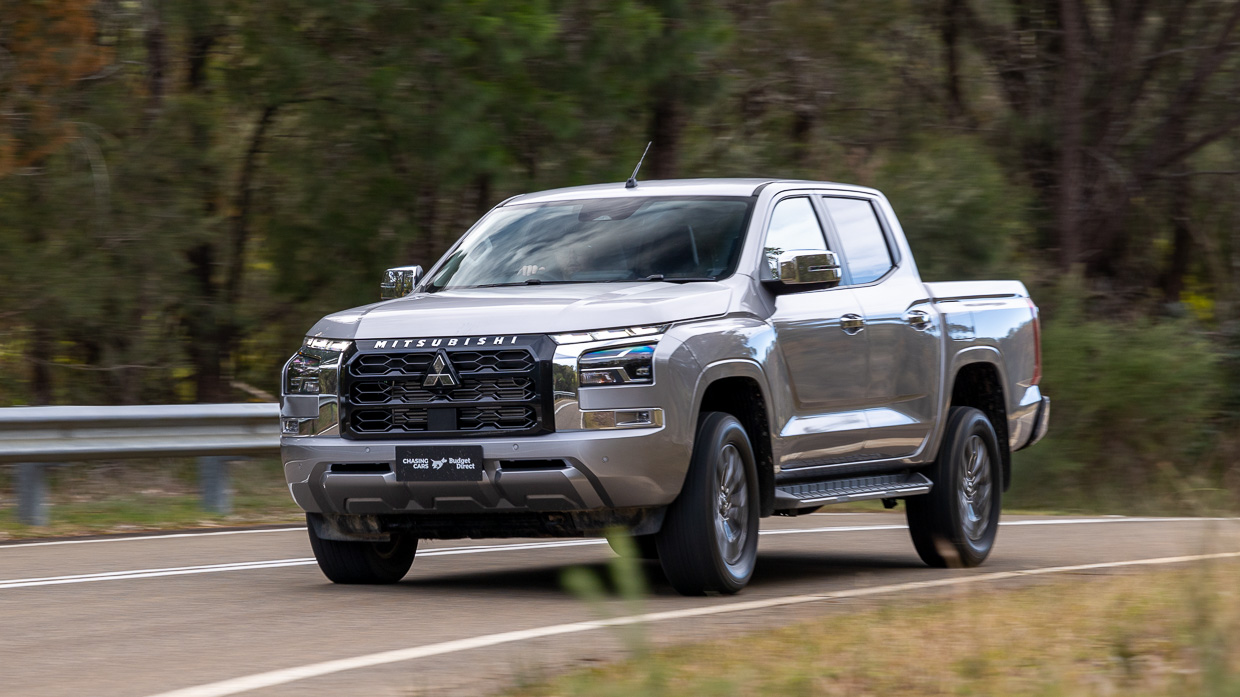
Powering this new Triton GLS is the 4N16 2.4-litre turbo-diesel with not one, but two turbochargers fitted. These turbos operate sequentially – one for low rpm and one for high rpm – but I wouldn’t say you can really feel that.
Outputs are up on the old Triton, with the 4N16 mill producing 150kW/470Nm. As part of our thorough testing, we put the Triton against the clock for a 0-100km/h sprint and the dual-cab ute got there in a best time of 8.58 seconds.
This new 4N16 is a bit of a loud, unrefined and rattly engine and doesn’t have the greatest level of throttle response something the 2.3-litre twin-turbo Navara is rather good at, admittedly with slightly less torque.
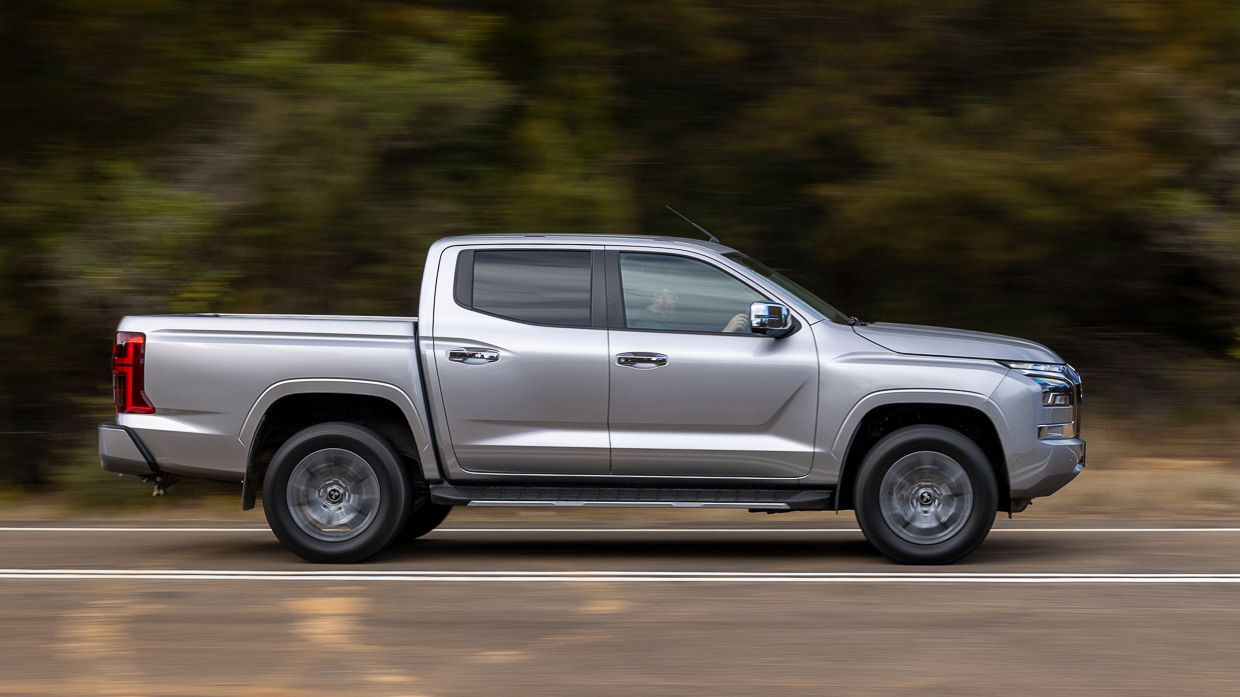
The 2.4-litre unit is quite similar to Isuzu’s 3.0-litre turbo-diesel in that it’s more truck-like than car-like. Some ute owners might like that – but those who perhaps consider themselves more of the ‘weekend warrior’ type and place emphasis on a vehicle that is still reasonably comfortable and refined for the Monday to Friday commute, may find this tiresome.
Getting out of Sydney city and onto the highway, the Triton settles into a much nicer rhythm. Its ride seems to settle between 100km/h and 110km/h and feels very stable and secure at these speeds. If you do find yourself on a country back road, the Triton powers through, but feels quite unsettled when cornering and hitting a bump mid stride.
Again, leaf springs can only do so much, but driving this unladen ute through sweeping, bumping corners is a bit of a wild ride. And although I didn’t get a chance to ride in the back seat, I have a sneaking suspicion that it could be a little bumpy back there!
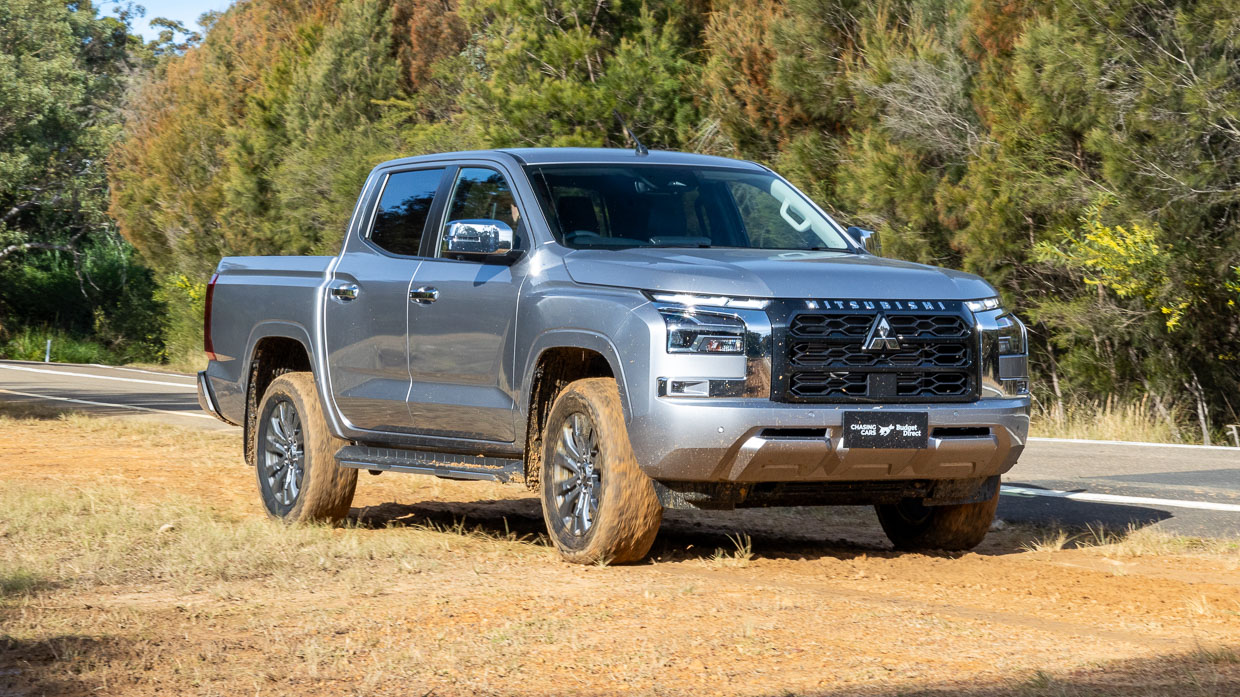
Perhaps it would be better hunkered down with more weight in the tray, but the best in this segment can do both.
Attached to the 4N16 four-cylinder engine is a six-speed torque converter automatic transmission which I thought would be an improvement, but its shifting seemed to me to be very lurchy and clunky, especially when cold.
This feeling did seem to improve as the Triton warmed up, but I have honestly felt more transmission refinement from a 10 year old Navara than this new Triton. We’ve had a smoother time in other versions of the latest Trition, so perhaps this review unit is an outlier. We’ll investigate further in future reviews.
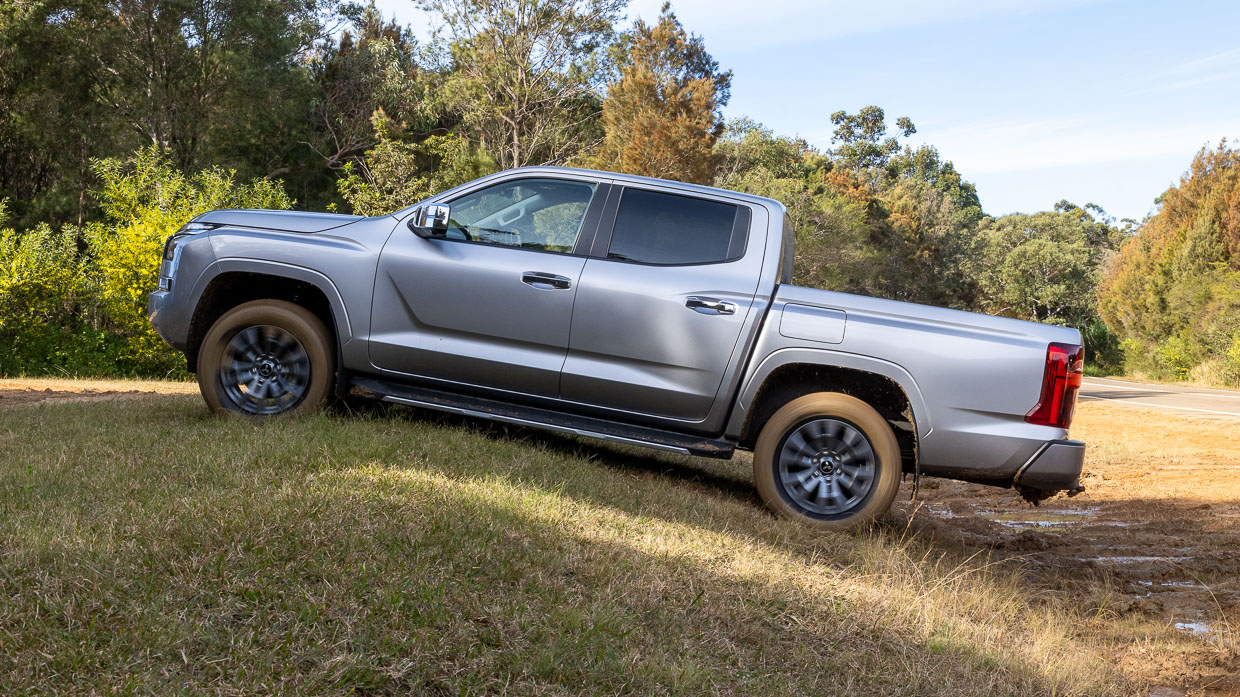
Some real positive points for the Triton GLS include nice light and communicative steering, surprisingly good on-road handling and, most importantly, off-road ability.
Utes are certainly not designed for corner carving, but I did find that on a good piece of blacktop out in the country, the Triton can be a pretty fun thing to steer when pushed a little harder.
It’s also notable that the Triton is one of the most affordable utes in this segment that comes with full-time four-wheel-drive, with Chinese utes like the GWM Cannon Ute making do with an on-demand system. Ford does now offer on-road 4WD with its cheaper bi-turbo engines but it’s still quite a bit more expensive than the Triton in a comparable spec.
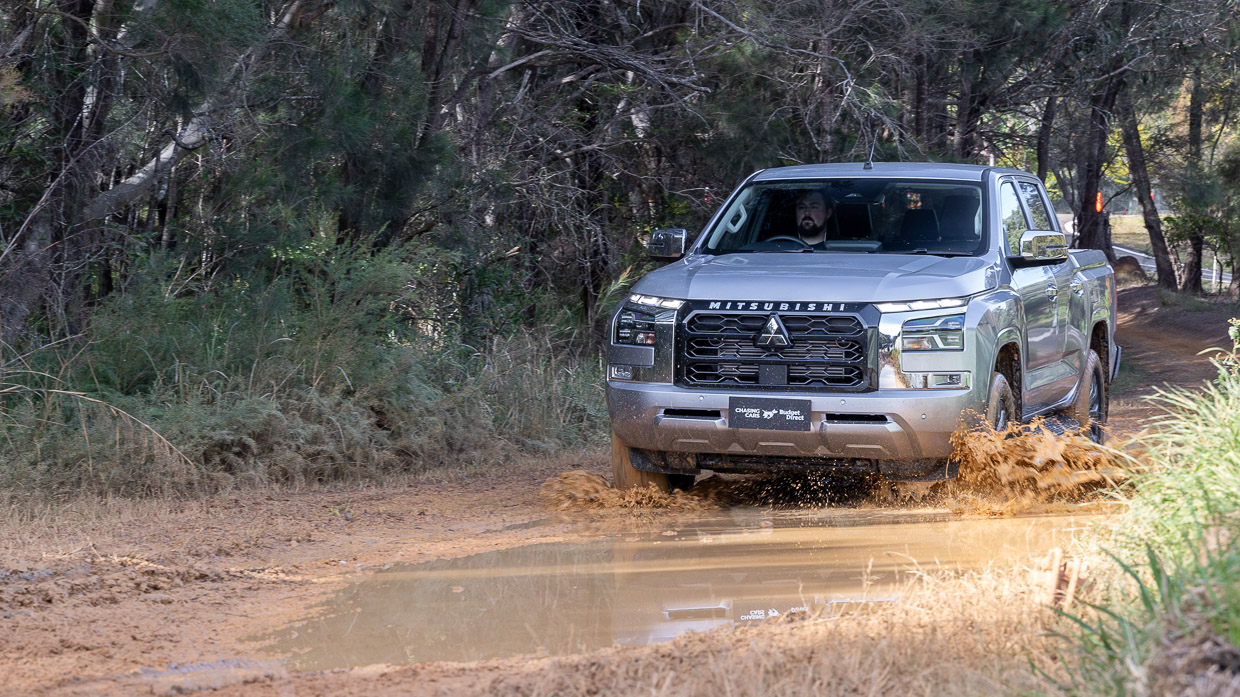
During my week with the GLS, I was able to take some time to hit the trails in the hills well past Sydney, which ultimately showed that the Triton remains a solid choice if you’re after some off-road weekend fun.
There is plenty of grunt from the 2.4-litre twin-turbo engine, plenty of grip thanks to Mitsubishi’s SuperSelect four-wheel drive system and enough articulation to get you over a decent chunk of obstacles.
Even on some obstacles which I thought would initially be a challenge for the mighty Triton, it conquered those tricky sections with ease and also without too much hair-raising wheelspin.
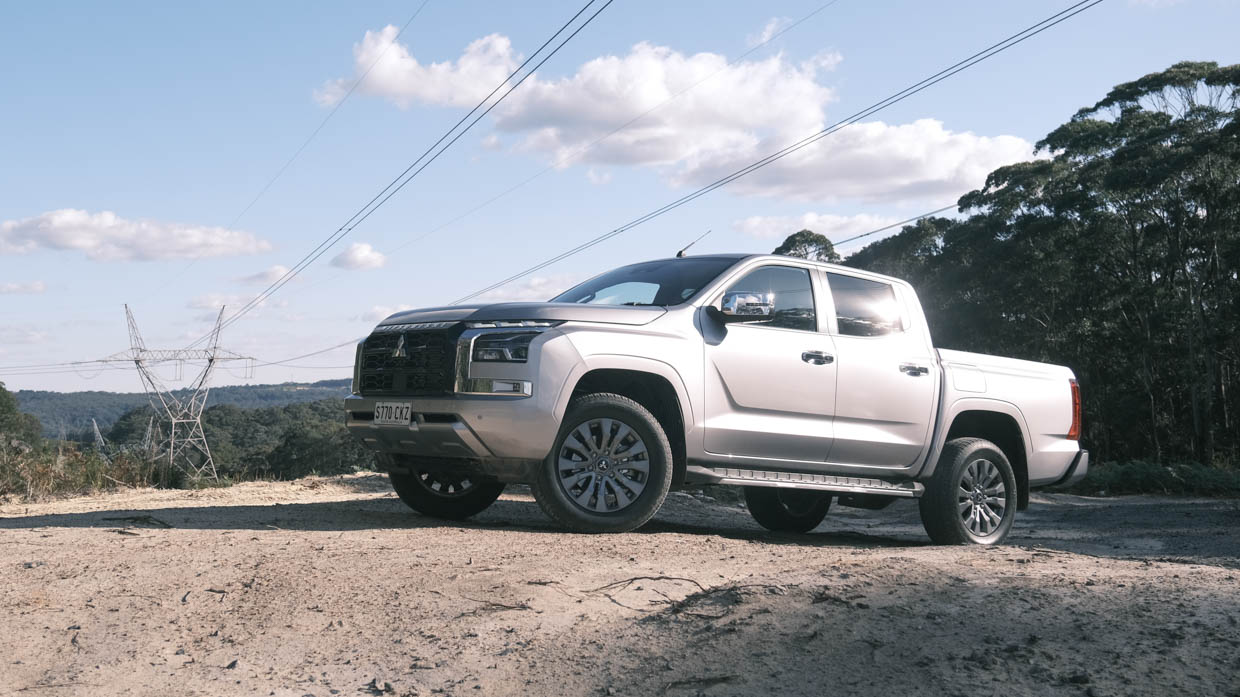
That ‘always-on’ four-wheel drive system really comes in handy, and not just with off-roading. Having that extra grip when out camping in a muddy, slippery field, or just driving around on a really wet day – this system really hits the mark.
There are also seven drive modes to choose from including Normal, Eco, Gravel, Snow, Mud, Sand and Rock. As I wasn’t far enough south west for snow, I tried out gravel and rock, however I’m actually not sure whether or not the majority of owners would bother to use these individualised systems.
On a separate note, a point worth raising is that Mitsubishi continues to use the now pretty-ancient drum brakes on the rear axle for its Triton. We tested the braking at our private test track, with the ute’s best recorded stop being 39.6 metres from 100 to zero.
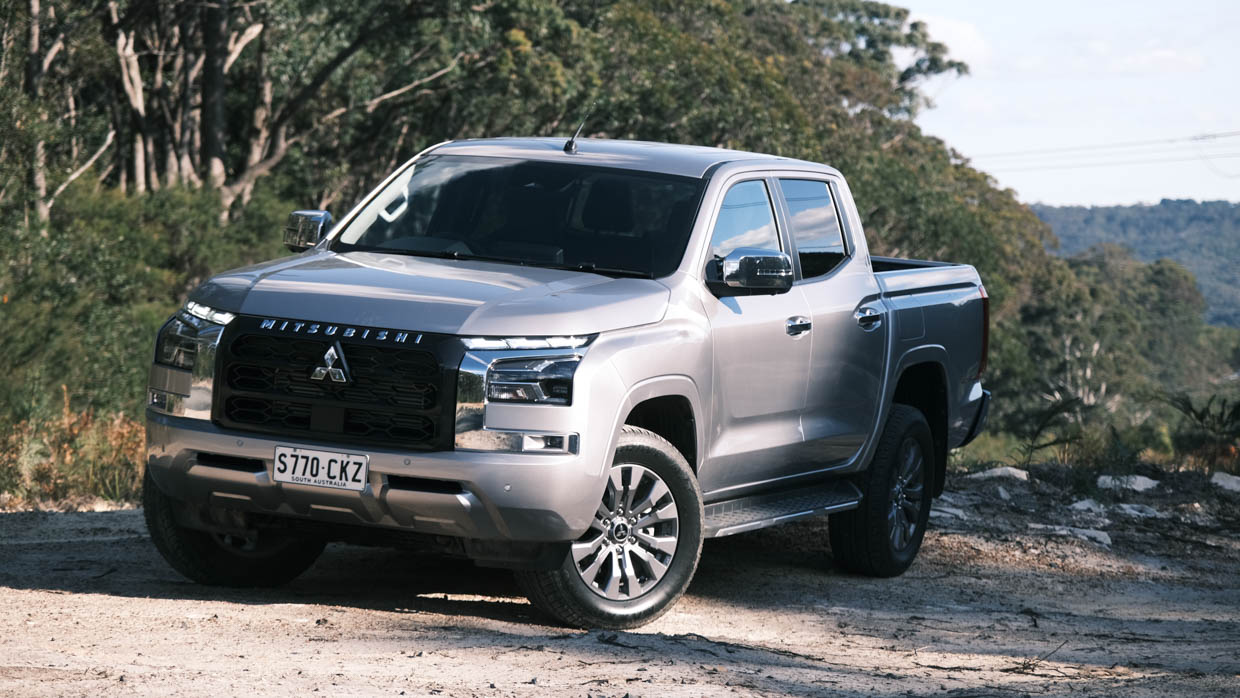
That was actually pretty good when compared to the Ranger and Hilux but the value of disc brakes is more likely to emerge in extreme conditions like heavy towing or long downhill descents where the poor heat disapation of a drum system is typically exposed.
All in all, the Triton’s driving experience might not feel like a new benchmark, but it remains a solid driving choice – as long as you don’t mind a bit of a firm ride!
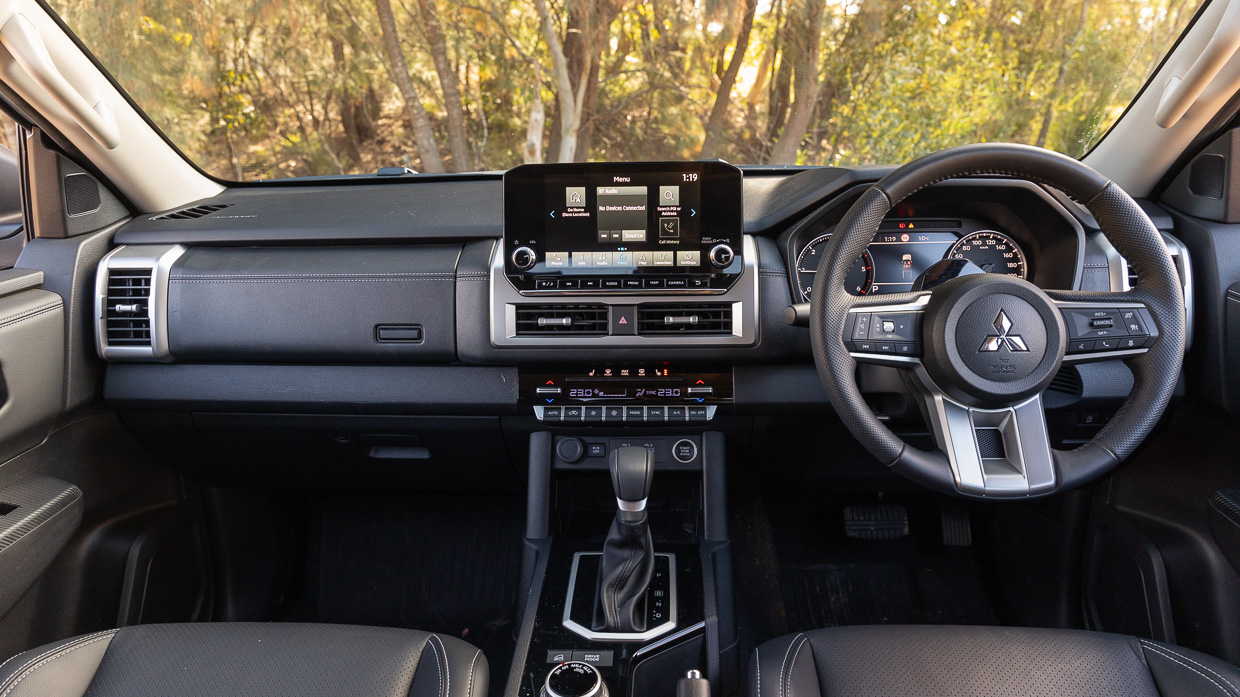
Sitting inside the Triton GLS, first impressions are just how comfortable the front seats are.
Finished in leather upholstery (as part of the Deluxe leather pack), these are very comfortable pews and well finished. As for cabin ambience and material choice, there is a lot going on in this interior. Mitsubishi seems to have added every possible type of cabin material into the Triton, including:

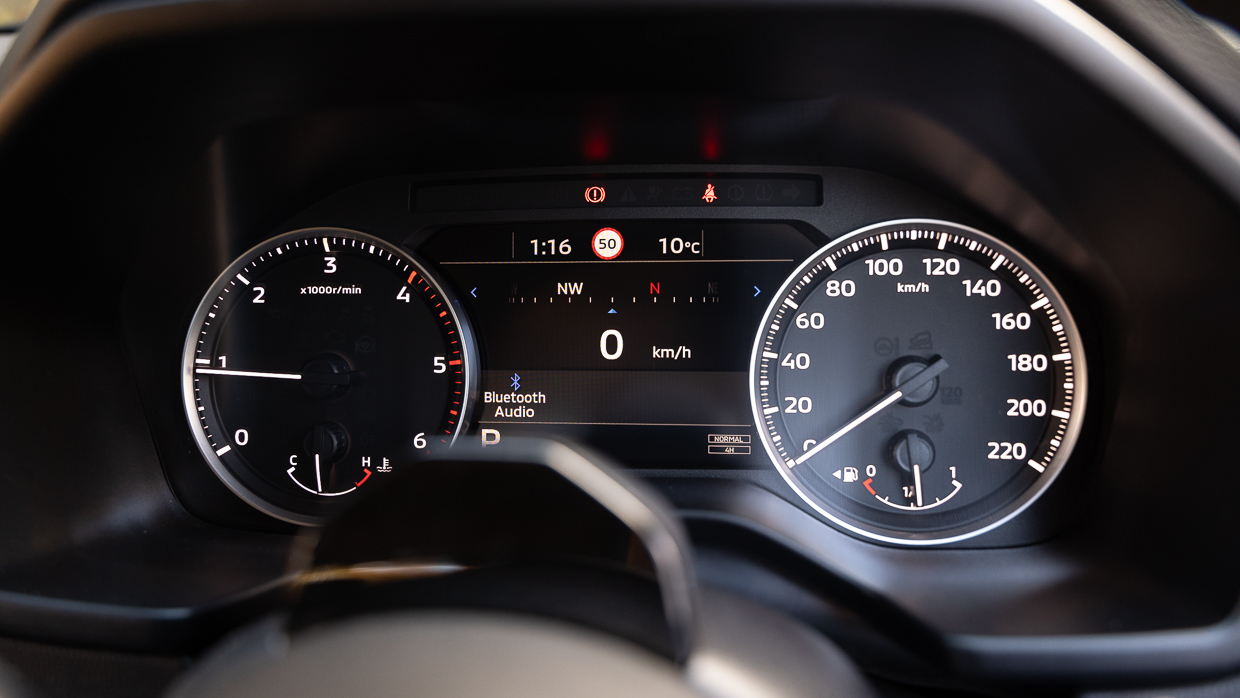
It’s all a bit much. Does it feel premium, though? I’m not sure it does. Triton interiors have always been built to last and I think the GLS nails that brief, but it doesn’t really feel upmarket.
In terms of cabin tech, front and centre is a 9.0-inch touchscreen that runs wireless Apple CarPlay and wired Android Auto. It’s got okay infotainment software and has satellite navigation, but it doesn’t really move the game forward, just brings it into the modern age.
For the driver, a 7.0-inch instrument cluster is directly in front, surrounded by two analogue gauges. The cluster can be customised and there are plenty of menus and settings to go through if you wish to do so.
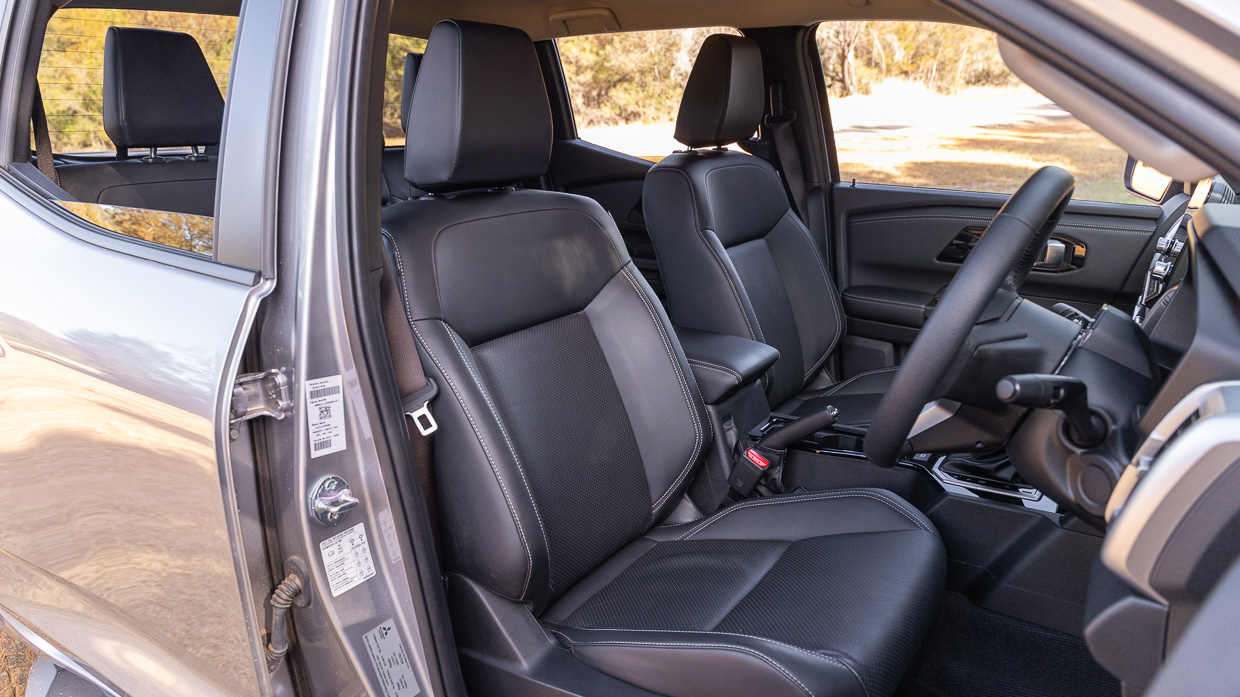
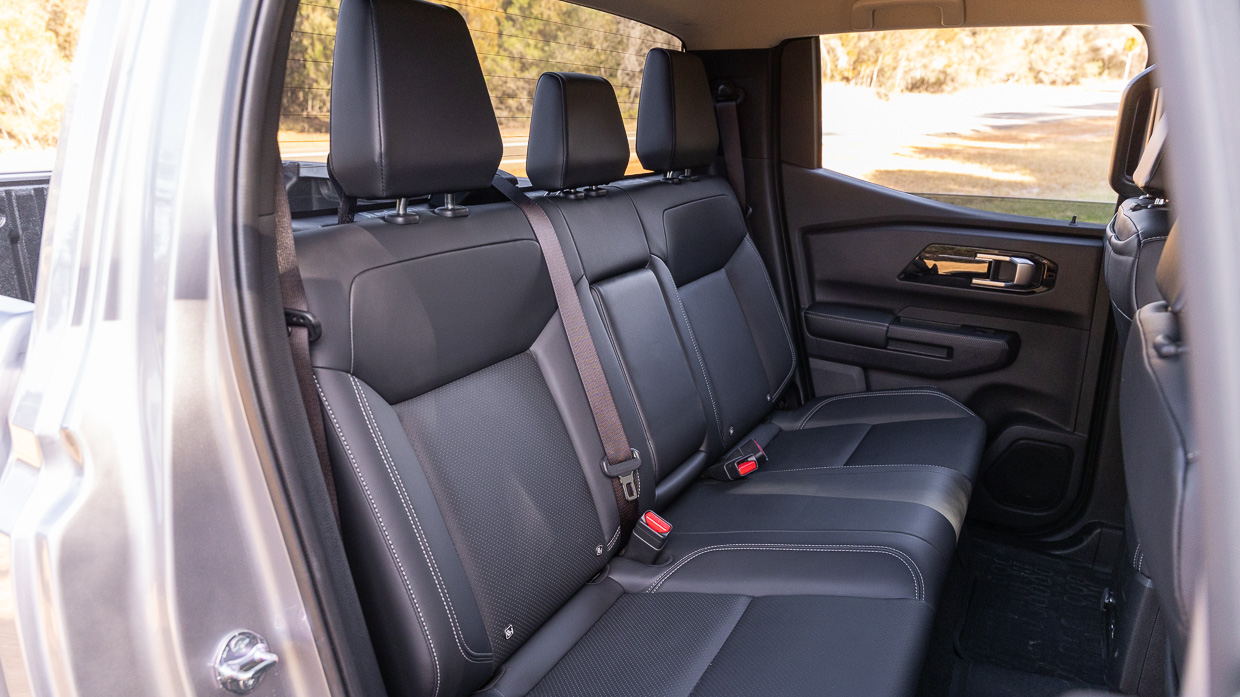
Other useful practicalities inside the cabin are two decent sized cup holders, a wireless phone charger, USB-A and USB-C ports, dual-zone climate control, deep door bins for water bottles, a sunglass holder above and a multi-function steering wheel that is easy to operate and navigate.
In the second row, it’s not a bad place to sit, even for a full-sized, 5’11 frame like me. Rear occupants gain USB-C and USB-A ports, a fold-down armrest with two cupholders, magazine holders in the back of the front seats and door bins for water bottles. I probably wouldn’t sit in the back for too long as an adult, but younger kids would be totally fine back there.
Lastly, the tray is an important part of any ute. This GLS has a normal tailgate, however it isn’t damped like what you’d often find on a Isuzu D-Max, for example.
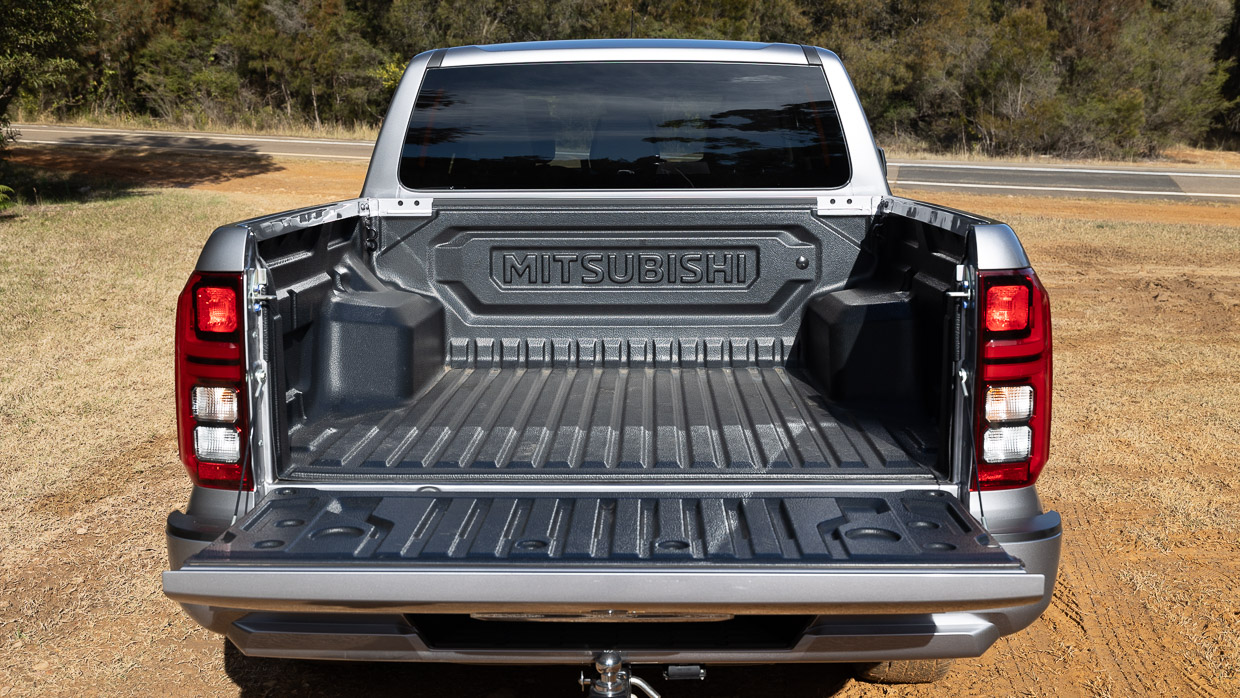
The tray dimensions are 1555mm long by 1135mm between the wheel arches. The tray has a built-in tubliner but only four basic tie down points. However, the new Triton does not have a flexible rack system or a power outlet in the tray area – that said, these can be easily added in the aftermarket
It’s worth noting that the Triton GLS can handle a payload of up to 1075kg which is far above many of the rivals in this segment unless you opt for something extreme like a Toyota Land Cruiser 70 Series. The GLS is rated to be able to tow up to 3500kg braked, or 750kg unbraked.
As for combined masses, the Triton GLS’s GCM is rated at 6250kg, so with a maximum 3500kg trailer allowance, and taking the ute’s 2125kg kerb weight into account, there is still 675kg to use, which will come in handy if you’re planning to add accessories such as a bull bar. That in itself is strongly worth part of your consideration.
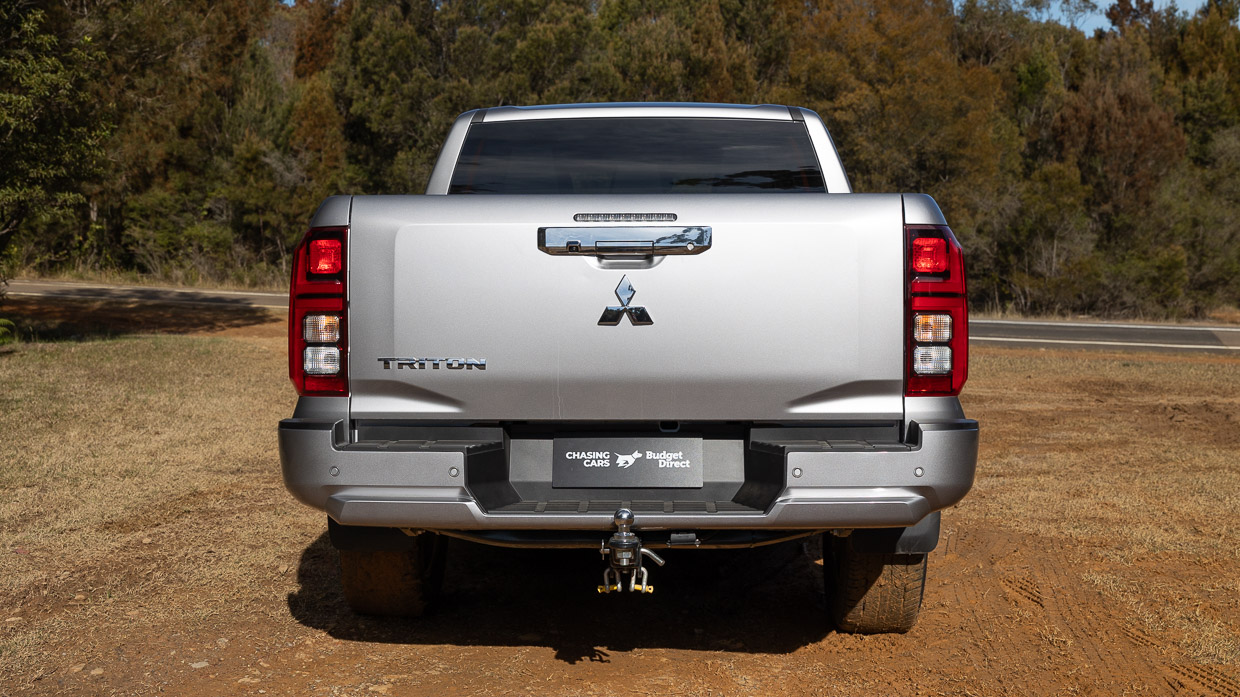
Mitsubishi this year received a five-star ANCAP safety rating for its new-gen Triton ute.
As standard, the Triton GLS is fitted with an extensive array of safety features:
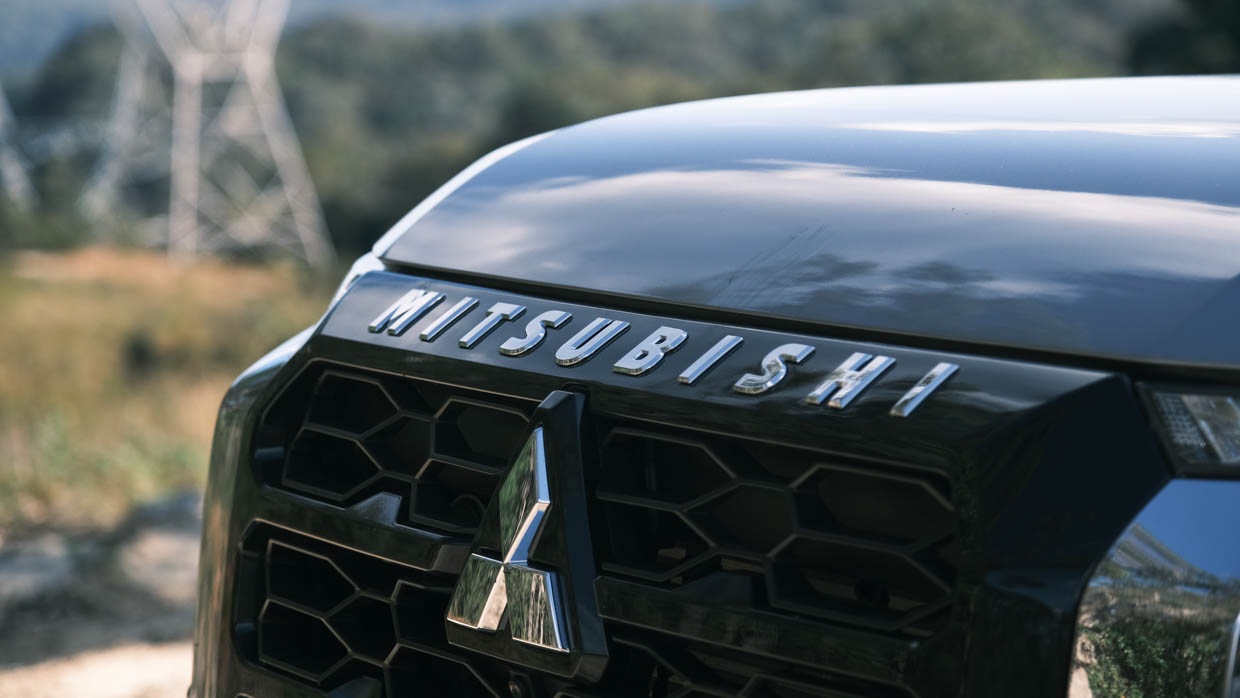
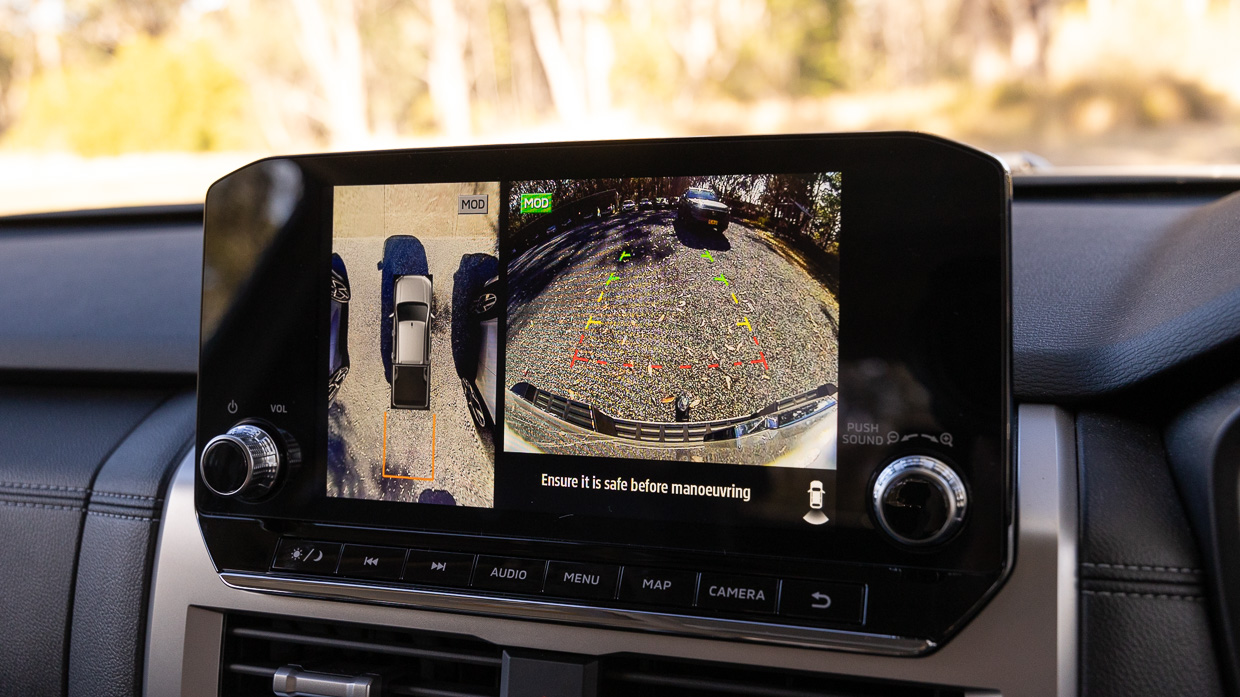
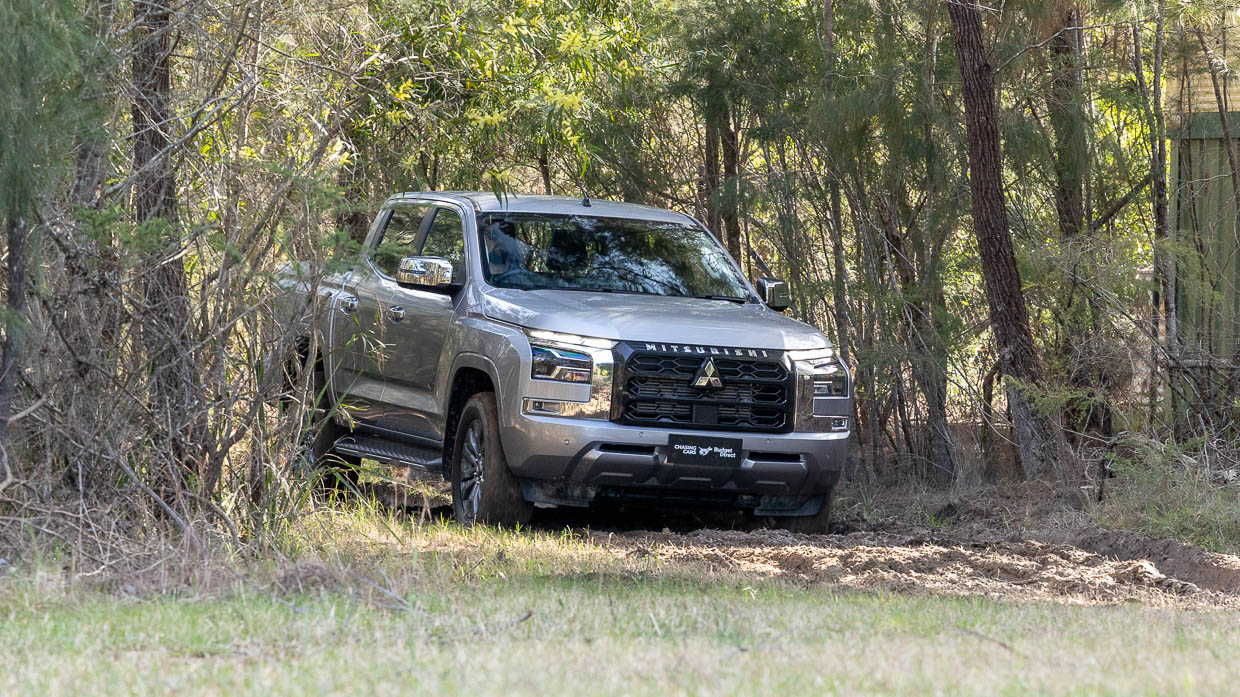
But, most importantly, how do these systems work in real-world driving situations?
One of my biggest gripes is with the driver monitoring system (DMS) which has been a pretty widespread issue among the automotive media industry.
At this point in time, the DMS is not a well-tuned piece of software.
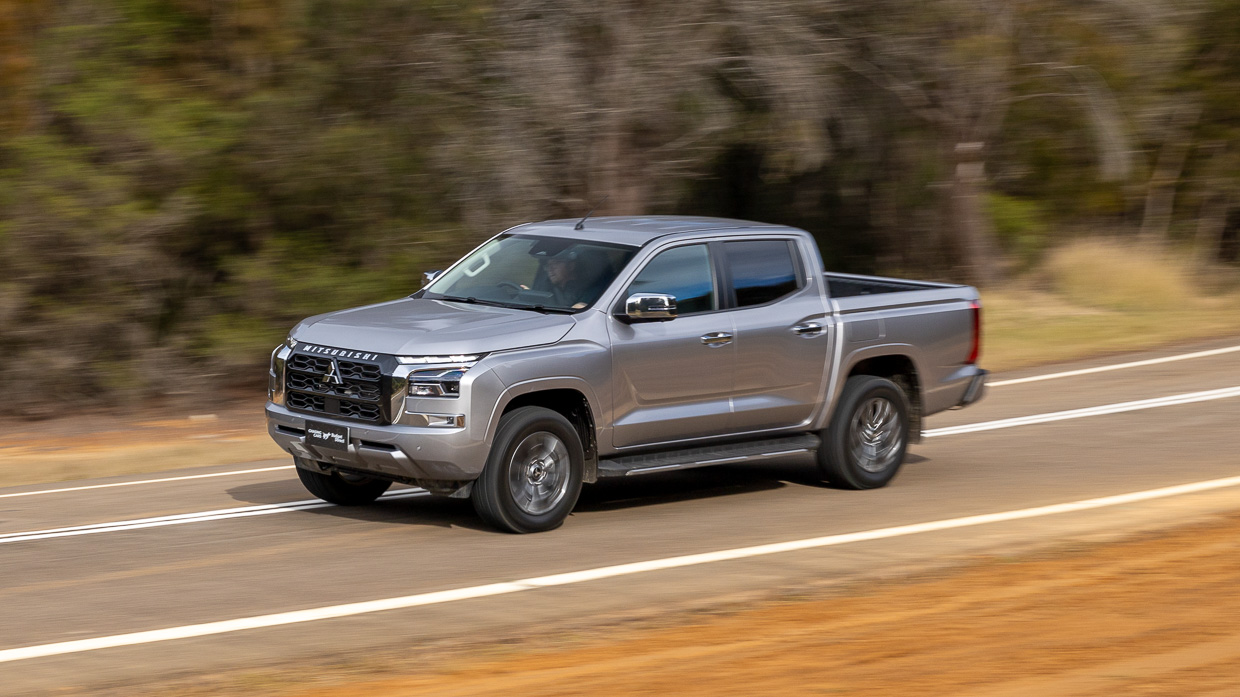
It’s unpredictable, irregular and inconsistent in the way it behaves. If you take your eyes off the road dead-straight ahead to either look at your side mirror or the touchscreen (if it is running navigation and directions etc.), an alert pops up in the driver cluster and, in turn, blocks the digital speedometer.
However, with all this said, Mitsubishi has officially addressed this DMS system and will start to roll out a software update for its new Triton.
The brand says it has improved the DMS and for utes already on the road, it will either update the vehicle’s software at the ute’s next service, or out of service at the owner’s request at Mitsubishi dealerships across the country.
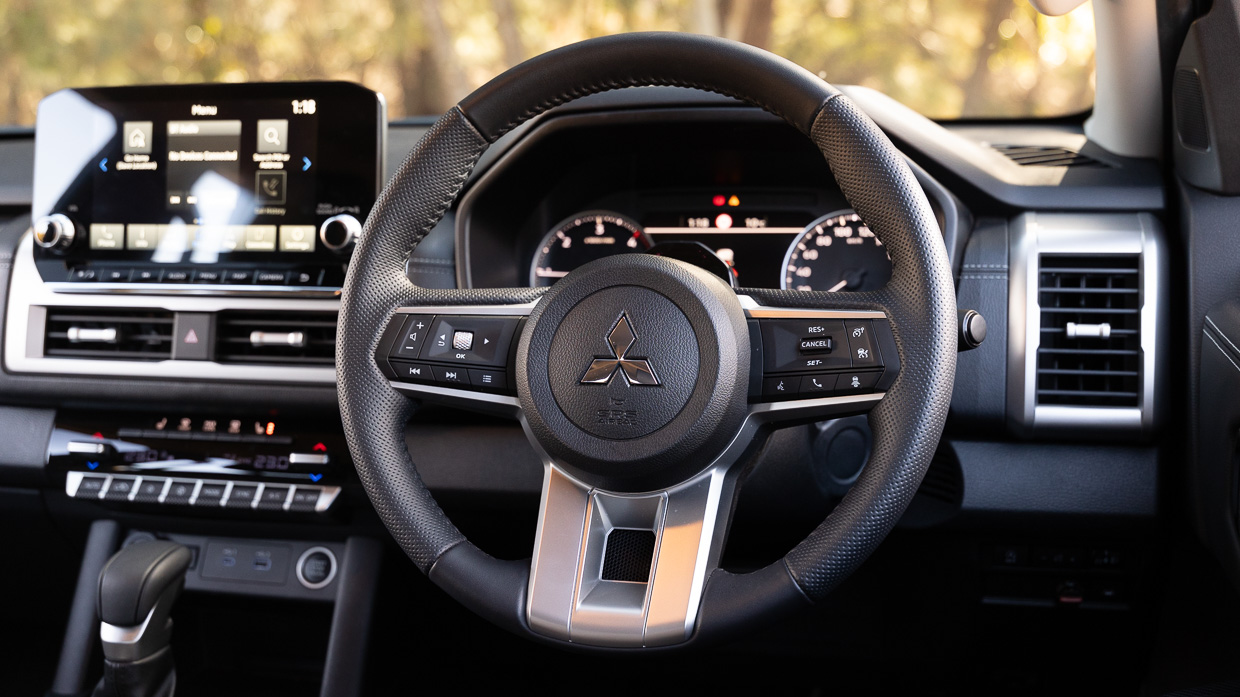
While initial reports from owners suggest this update is a marketed improvement, we have chosen to review the car in front of us as is and assess the recalibrated system in the near future.
The second gripe I have with Mitsubishi’s safety systems is the lane-keep assist. Again, much like the DMS, this is a system that is irregular in its behaviour.
Sometimes it reacts to the white-lined edge of the road, other times it does nothing at all. I believe 110 percent on safety in cars, but if they don’t work all the time, how can they save you when something happens? And if they aren’t well calibrated, why are they in the vehicle at all?
I’m glad Mitsubishi has gone back to the drawing board regarding some of these systems, but in general, utes and safety still has some way to go.
Mitsubishi runs a very competitive warranty in Australia – 10 years/200,000km – but there is a catch. To get that warranty, owners will need to service their Triton each and every time with an authorised Mitsubishi dealership, otherwise the warrant defaults to five years and 100,000 kilometres.
In terms of servicing, it will cost Mitsubishi Triton owners $2445 to service the ute over five years. To compare, it’ll cost a pretty similar $2555 to service a Isuzu D-Max 3.0-litre over the same period of time and distance. For reference, the comparable Ford Ranger 2.0-litre diesel will cost $2540, so the Triton isn’t ridiculously expensive in this regard.
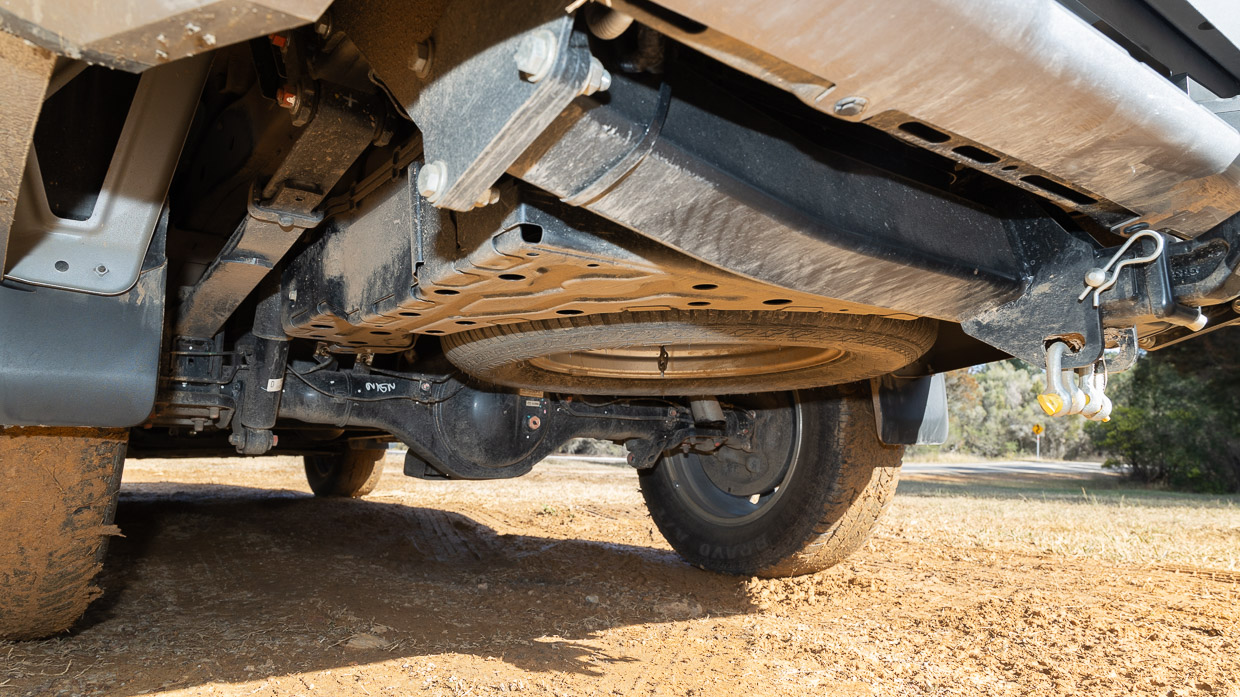
Pictured: the underslung AdBlue tank
Service intervals for the new Triton are every 12 months, or 15,000 kilometres, whichever occurs first.
With fuel efficiency, Mitsubishi’s official combined consumption for the Triton is 7.7L/100km. We got pretty close, averaging between 7.5L/100km and 8.0L/100km in a mix of driving situations – highway, around town and off-roading. That’s not too far off from what I saw the bi-turbo Nissan Navara achieve, which for us averaged 7.6L/100km in a good result for both utes.
The new Triton has a 75-litre fuel tank and also requires AdBlue.
How can I sum up the 2024 Mitsubishi Triton GLS after a week of extensive testing?
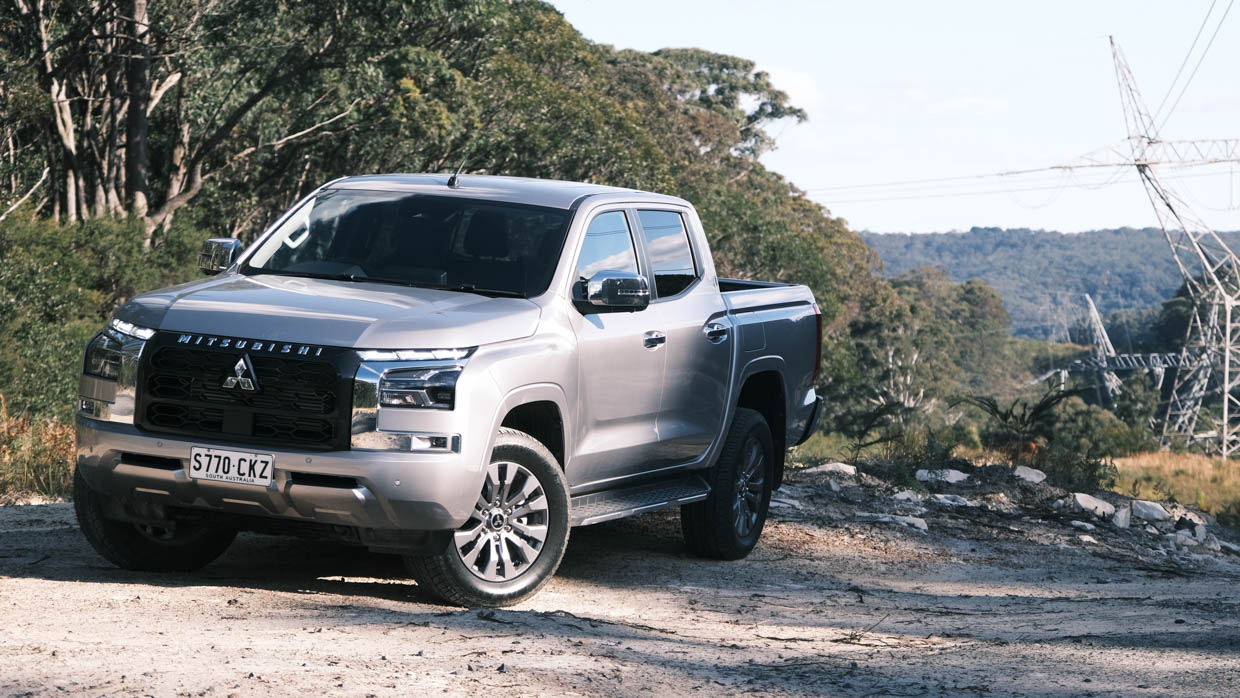
In 2024, there are so many utes to choose from in Australia and a stack load of competition. The Mitsubishi Triton may have a new engine, an all-new look and is bigger than before, and while it may not necessarily move the ute game forward in all areas, there’s a lot to like here for the price.
The Triton in 2024 succeeds with a frugal twin-turbo engine, plenty of practicality and off-road grunt and prowess.
But the ute suffers to some degree with a loud and unrefined engine and transmission pairing, firm, jittery suspension ride and annoying (soon to be fixed, hopefully) driver monitoring and lane keep assist functions.
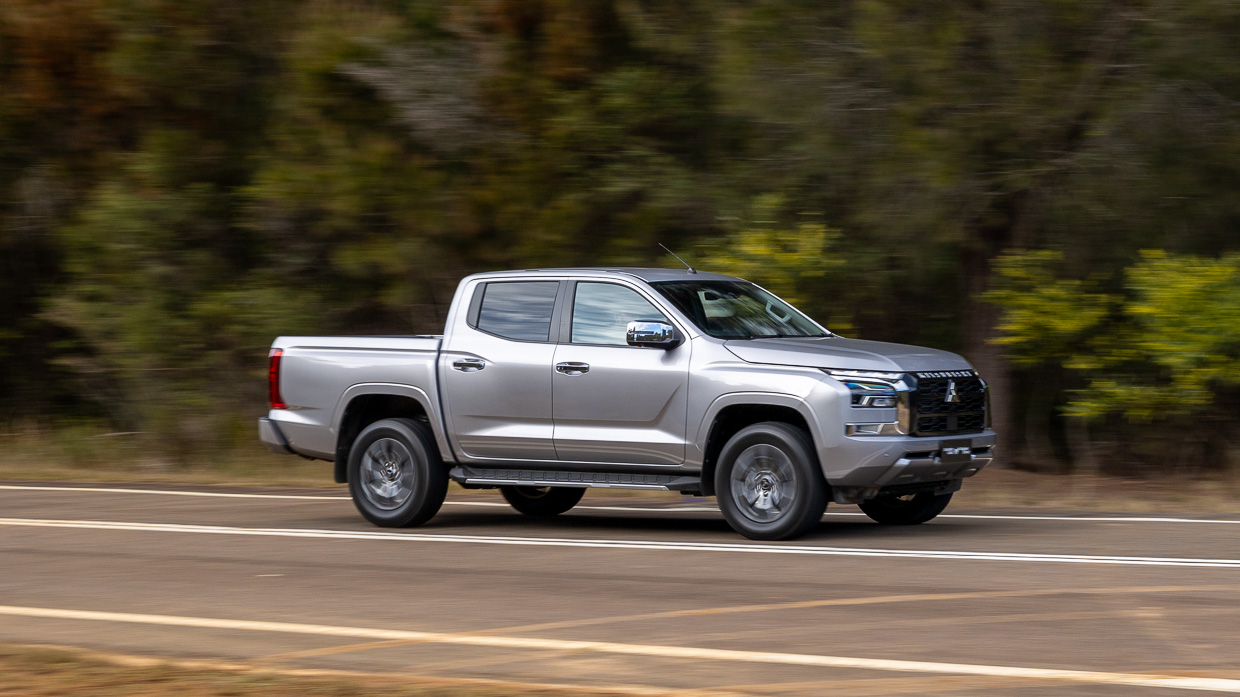
So is the new Mitsubishi Triton an upgrade over the past? Aesthetically yes, but powertrain-wise, not so much.
And is the model premium enough for lifestyle buyers? Well, I feel it is a step above the old MR Triton, but it’s certainly no high-grade Ranger or Amarok, though these models do come with a sizable step up in price. For instance, it will cost you $7050 to step up into a Ranger Sport 4×4 2.0-litre from the $59,090 Triton GLS.
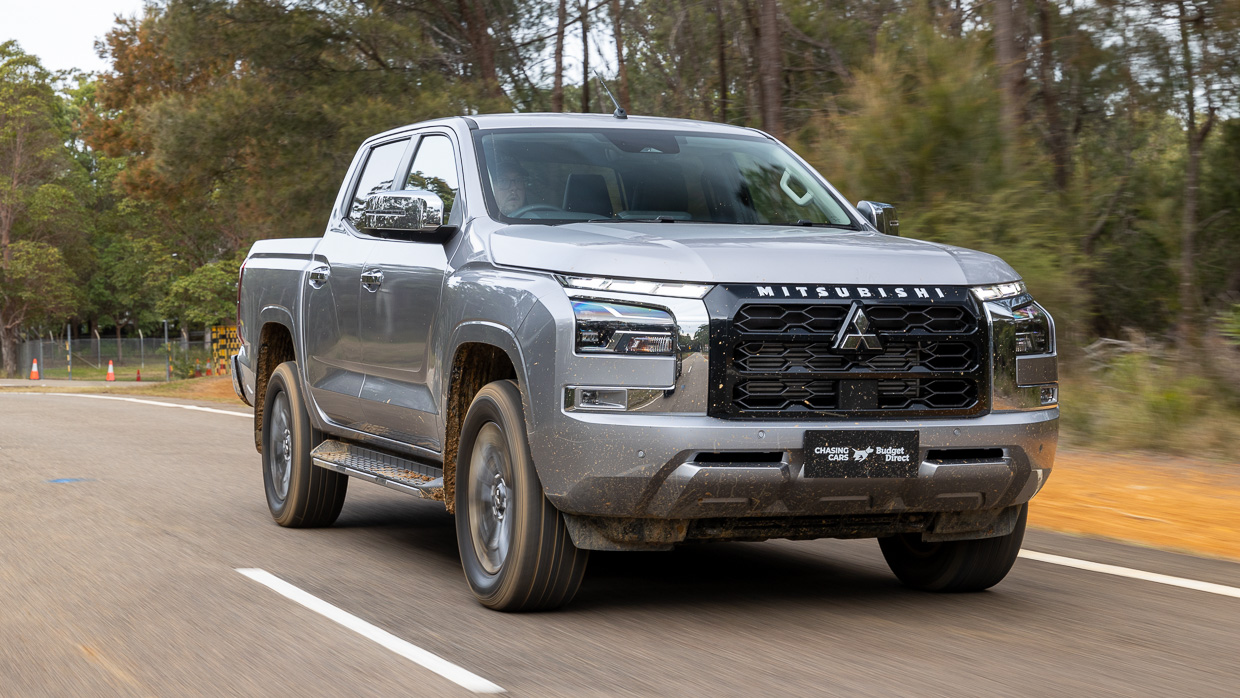
With the Kia Tasman and the BYD Shark readying for entry into the Australia ute market, will the Triton be enough to fend them off?
I’m looking forward to seeing how the battle plays out!
Key specs (as tested)
About Chasing cars
Chasing Cars reviews are 100% independent.
Because we are powered by Budget Direct Insurance, we don’t receive advertising or sales revenue from car manufacturers.
We’re truly independent – giving you Australia’s best car reviews.
The estimate provided does not take into account your personal circumstances but is intended to give a general indication of the cost of insurance, in order to obtain a complete quote, please visit www.budgetdirect.com.au. Estimate includes 15%^ online discount.
^Conditions Apply
Budget Direct Insurance arranged by Auto & General Services Pty Ltd ACN 003 617 909(AGS) AFSL 241 411, for and on behalf of the insurer, Auto & General Insurance Company Limited(ABN 42 111 586 353, AFSL 285 571).Because we don’t know your financial needs, we can’t advise you if this insurance will suit you. You should consider your needs and the Product Disclosure Statement before making a decision to buy insurance. Terms and conditions apply.
Indicative quote based on assumptions including postcode , 40 year old male with no offences, licence suspensions or claims in the last 5 years, a NCD Rating 1 and no younger drivers listed. White car, driven up to 10,000kms a year, unfinanced, with no modifications, factory options and/or non-standard accessories, private use only and garaged at night.
^Online Discounts Terms & Conditions
1. Discounts apply to the premium paid for a new Budget Direct Gold Comprehensive Car Insurance, Third Party Property Only or Third Party Property, Fire & Theft Insurance policy initiated online on or after 29 March 2017. Discounts do not apply to optional Roadside Assistance.
2. Discounts do not apply to any renewal offer of insurance.
3. Discounts only apply to the insurance portion of the premium. Discounts are applied before government charges, taxes, levies and fees, including instalment processing fees (as applicable). The full extent of discounts may therefore be impacted.
4. We reserve the right to change the offer without notice.